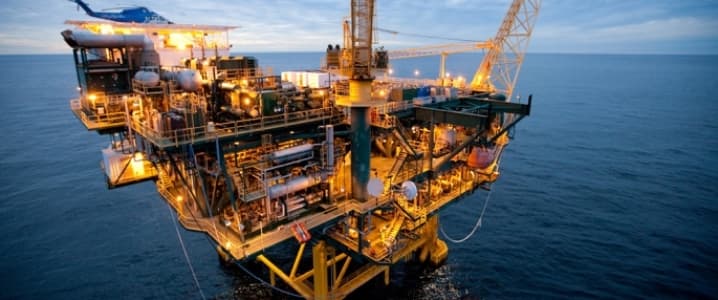2017 could be an “above-normal” year for large hurricanes, according to the National Oceanic and Atmospheric Administration (NOAA), a potential problem for Gulf Coast oil drillers and refiners.
NOAA puts the odds of an “above-normal” season for hurricanes at 45 percent, while the chances of a normal and below-normal season are at 35 and 20 percent, respectively. In fact, they said that there is a 70 percent likelihood of 11 to 17 named storms, which are storms that have 39 mile-per-hour winds or higher. About 5 to 9 of those could become hurricanes (winds of 74 mph or higher); 2 to 4 of which could become major hurricanes (winds of 111 mph or higher). The average season (which runs from June through November) tends to have just 12 named storms, so the potential for 17 named storms puts the 2017 hurricane season in more treacherous territory.
"We're expecting a lot of storms this season," Gerry Bell, lead seasonal hurricane forecaster with NOAA’s Climate Prediction Center, told reporters. "Whether it's above normal or near normal, that's a lot of hurricanes."
Part of the reason for the expected uptick in hurricane activity is because the El Nino phenomenon is not expected to show up. El Ninos tend to suppress hurricanes. Also, sea-surface temperatures are above-average, which contributes to stronger storms.
There has been a decade-long lull in major hurricanes that have struck the U.S., but there is a growing probability that that changes this year.
That should be cause for concern for the oil and gas industry, much of which is located along the Gulf Coast. They have been spared the worst that Mother Nature has to offer for quite some time. Related: Oil Prices Fall As U.S. Rig Count Rises For 20th Straight Week
In 2005, Hurricanes Katrina and Rita, which struck the Gulf Coast within a couple of weeks of each other, destroyed 115 oil platforms and damaged 52 others, leading to the “near total shut-down of the Gulf’s offshore oil and gas production,” according to the Bureau of Safety and Environmental Enforcement. While the effects were mostly temporary, nine months later as much as 22 percent of oil production and 13 percent of gas production in federal waters remained offline.
WTI oil prices jumped more than 20 percent within a few weeks because of the outages, from $57 in mid-July to $69 per barrel on September 1, several days after the storm made landfall.
The industry is much better prepared these days than it was then, with improved standards on new rigs and much better processes for evacuation and subsequent return to production. Today’s rigs can withstand higher waves and stronger winds. They also can position themselves using GPS rather than being moored to the seafloor. Storm prediction is also vastly improved. As such, even a major hurricane on the scale of Katrina is unlikely to be as damaging as it was in 2005.
Still, outages can still occur, taking crude oil production and refining offline. The averaged named storm can slash output in the Gulf by an average of 169,000 bpd month-on-month, according to BTU Analytics. Much of that tends to come back online quickly, but that isn’t guaranteed. “It takes more than a flip of a switch to get a refinery back up and running,” the American Petroleum Institute says, and pipelines cannot operate if they do not have power.
Moreover, there have been few test cases since the disaster of 2005. In 2008, an estimated 60 oil and gas platforms were destroyed from Hurricanes Ike and Gustav. A slow-moving Hurricane Isaac in 2012 destroyed some onshore storage facilities. Other than that, there have only been relatively manageable storms. The outcome from a Category 5 storm is uncertain. Related: Oil Prices Rise As EIA Confirms Strong Draw To Crude Inventories
But one other factor working in the industry’s favor is that there just aren’t as many rigs deployed in the Gulf as there was ten years ago. The U.S. offshore rig count stands at 23 as of mid-May, down from over 100 back in 2005-2007.

(Click to enlarge)
Given the state of the oil market today, even a major hurricane might not be enough to really move the needle all that much on oil prices. Inventories are still sky-high, and many analysts are expecting only modest increases in prices this year, with questions still lingering about a possible glut in 2018. However, the warning from NOAA that hurricane season could be much more active this year bears watching.
By Nick Cunningham of Oilprice.com
More Top Reads From Oilprice.com:
- Russia’s Economy Minister: Russia Can Live Forever At $40 Oil
- Canada Pushes For Zero Emission Vehicle Strategy
- Has Permian Productivity Peaked?

















